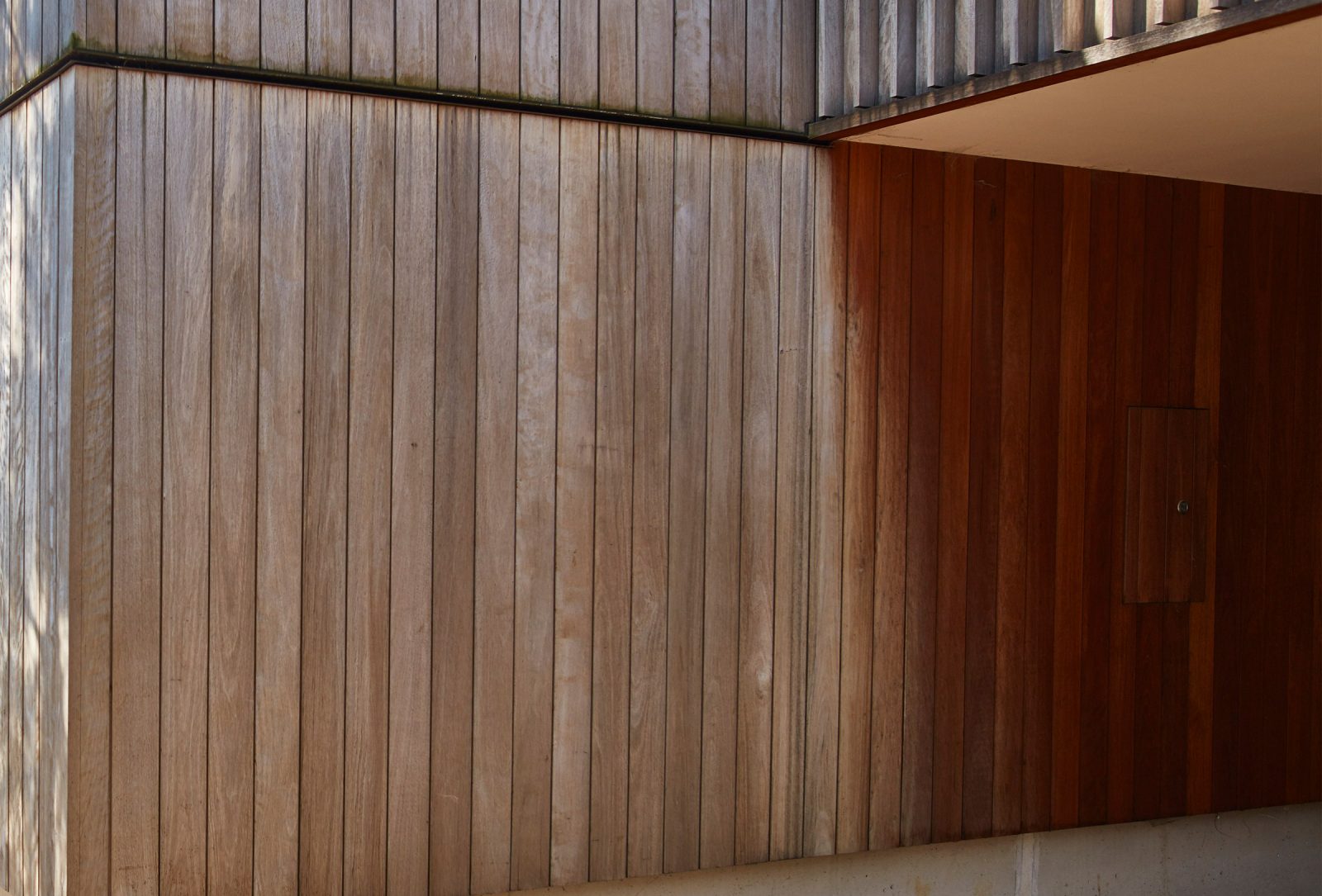Weathered Timber – The low maintenance solution
Timber is a natural material, its unpredictable grain and variation in colouring provide a look which is truly unique. This is why timber is such a popular material for specifiers, who recognise the intangible value in having natural materials as a major part of their designs.
As with anything natural, timber changes over time. Differences in colouring are the most obvious of these changes, particularly in timber used for external applications.
It is important for both specifiers and clients to understand the evolution external timber will go through, particularly in terms of maintenance.
Maintenance – and how to avoid it
Maintenance is a word no client is excited to hear, and often can be a deciding factor on whether external timber is used on a project. Maintenance schedules can vary depending on climate, UV exposure and coatings, and often range from a recoating every 6 months to zero maintenance at all.
Using timber for applications such as soffits or in undercover areas can virtually eliminate maintenance for a project. With no exposure to rain or UV radiation, the timber is protected and therefore eliminates the need to be re-coated.
The other option to avoid regular maintenance is to simply allow the timber to weather. This means very little maintenance even on external timber, however the colour of the timber will fade drastically so it is important to understand how the timber will look once it has weathered.
Why does timber turn grey?
Timber loses its natural colour after exposure to the elements due to chemical changes occurring within. Timber contains lignins, which hold the fibres of the timber together like glue, and tannins (water-soluble extractives). Variations of which give each timber species its unique colour.
When exposed to UV light, the lignins break down into simple sugars and the tannins can slowly oxidise, affecting the colour of the timber. Tannins can also begin to be released from the timber by rain, causing timber leaching onto nearby surfaces. This only occurs for a short period of time after installation, read our article on timber leaching to understand the steps to take to minimise leaching.
Pictured below, Hans House has been allowed to grey over 3 years. Clear oil coating was applied then allowed to weather naturally.


Which coating allows timber to weather?
All external timber should be coated either before or very soon after installation. Using raw timber for applications which will be exposed to UV radiation can lead to increased surface checking due to the timber drying out.
At Sculptform we recommend our Clear Oil coating for most external applications, as it is designed to hydrate and preserve the structural integrity of the timber. Movement of the timber due to moisture is also minimised by using this coating.
Our Clear Oil coating also breaks down over time, and will never crack or peel, but will not help preserve the colouring of the timber. Clear Oil containing pigment is available to provide the same protection while helping maintain the original colouring of the timber.
Ensuring consistency of colouring
When designing for external applications using timber, it is important to remember that UV exposure is the number one factor in the rate at which timber loses its colour. Different areas of a building will receive different levels of UV, at different times of the day.
Overhangs and soffits are particularly troublesome when it comes to trying to maintain consistent colour on your external timber.
Read more in our article Maintaining Consistent Colour on External Timber.

Situations like the above can cause external timber to weather differently, causing extreme variations in colour.

Soffits like this at Dandenong Mental Health weather at a different rate due to much less exposure to UV.
Advantages of allowing timber to weather
The aesthetic of weathered timber is increasing in popularity, particularly in areas where the aged look fits into the surroundings. While a newly installed timber facade looks incredible, the greyed off aesthetic also has its advantages.
The organic look
For locations such as coastal or suburban environments, a weathered timber facade can help a building blend into its surroundings. The same natural aesthetic can also help a structure stand out if that is the desired effect. The beautiful evolution of timber as it ages can provide character to a project, differences in the grain of the timber providing variation within the greyed off colour palette.


Have a question?
Contact us to discuss this further or if you require any more information when using our Click-on Battens or Tongue & Groove Cladding externally.
 Price & Spec
Price & Spec

